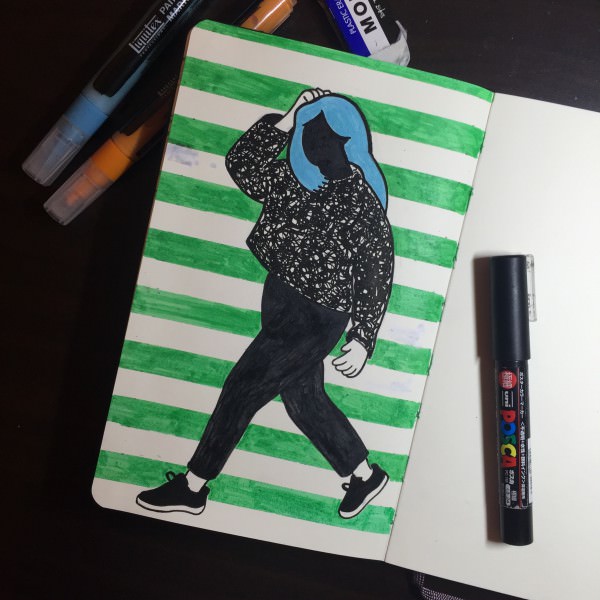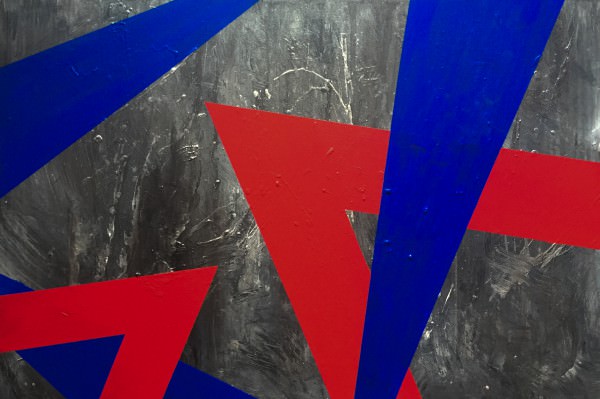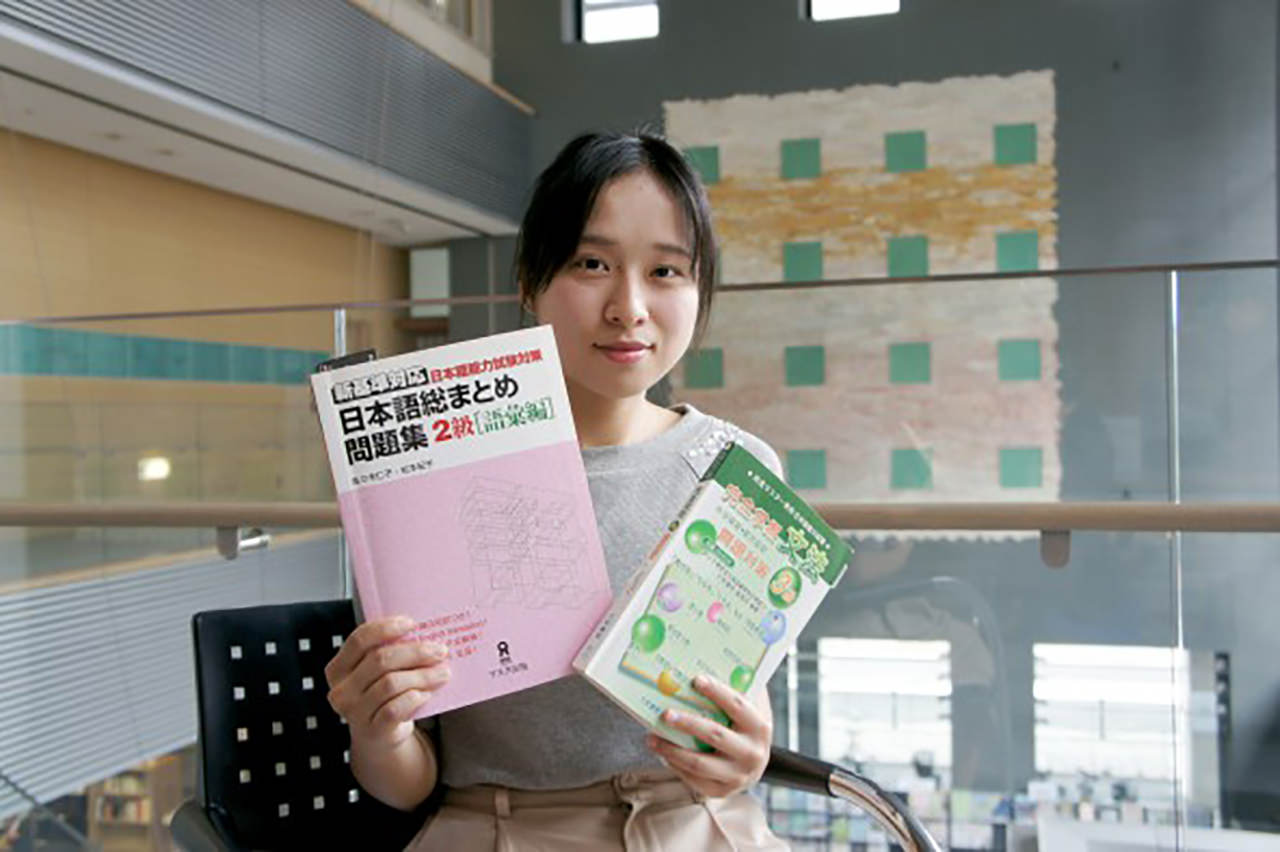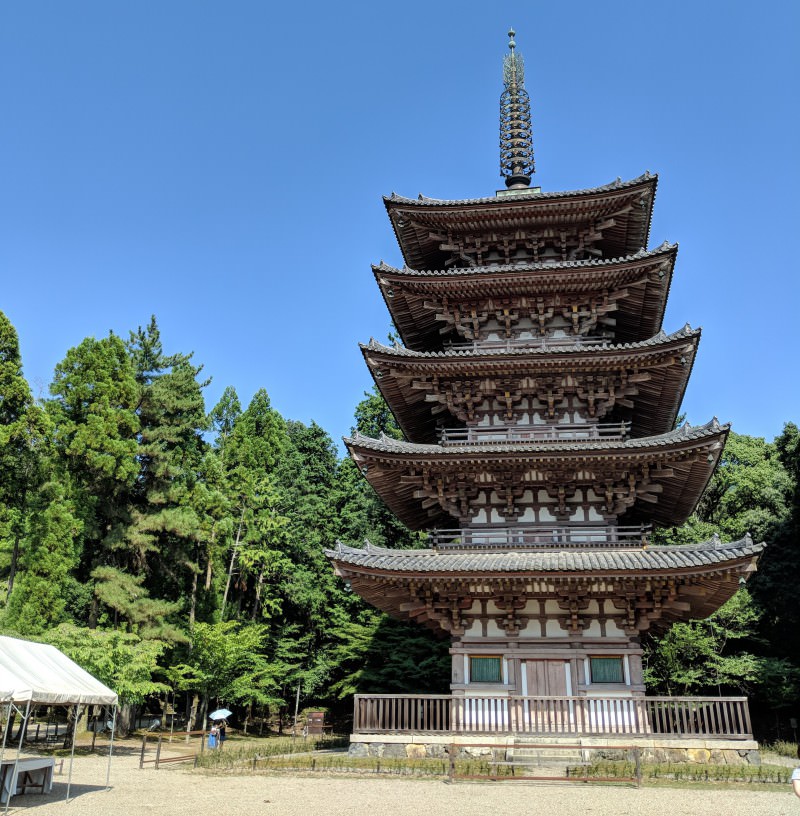Studying the Arts in Kyoto!
2017.03.13
What are classes like in an arts university?
Q: What are you studying now?
A: When I became a junior, I chose the Art & Design Class in the Illustration Department, so my classes now are leaning more towards artistic expression and design materials rather than illustration. People who want to do illustration can use their drawings as a part of their materials, of course, too!
Recently I’ve been designing an artbook. The artbooks are all personal projects, so we can do whatever we want with the inside—people who are into manga will fill their books with that sort of thing—and the style of the binding is up to us as well. We can print our work, or do it all by hand. It all depends on what we want the purpose of our artbook to be.
Q: Do you feel that there’s a great difference between the “art” and “design” that you’re learning in class now?
A: With art, the concept is really important. It’s not just about making a pretty picture; how you go about making it, and the thinking behind the work is really important, too. With design, you need to be able to fulfill the needs of your client.
Q: Do you think your works fall more into the design category or the art category?
A: That’s a good question. (laughs) I do feel like the “art” side has more freedom, but in the end, I think the “design” side is necessary for getting work. I think I’m better suited for design. I feel like “art” is something you make for yourself.
Q: What kind of tools or computer programs do you use when you’re working?
A: Mostly I paint with acrylics. Once you become a junior, as long as you choose your working materials with the purpose of your piece in mind, you can work with whatever you like. So of course programs like Photoshop and Illustrator are ok, too.
When I was a freshman the teacher used to tell us all the time not to rely too much on the computer, though. We were told it was really important for us to use our hands to make our art, and that to really get in touch with the sensation of making art we had to touch something other than our pen tablets and computer mice. But by the time you’re a junior and you can start choosing your own medium, people start using their computers again.
Q: What has been the best thing about studying in Kyoto for you?
A: I always had this image of Kyoto as this center of culture and history, and that if you come to Japan, Kyoto is the place to go to experience traditional Japanese culture.
I didn’t know Kyoto had so many arts universities until I started researching it, though. I knew Kyoto University was famous, of course, but until I didn’t really have this image of Kyoto as a “city of universities.”
As an international student, to be honest, I feel like if you’re going to study abroad in Tokyo, you might as well study abroad in New York, or somewhere like that. In my opinion, if you’re going to go to Japan, you might as well go somewhere that really feels “Japanese.”
When it comes to the art scene in the English-speaking world, I think you can find most information online, because most of the internet is written in English. But to find out about the art scene in Japan, you really have to come to Japan itself.
I often feel that Japanese people have a really unique artistic sensibility. My classmates will say things that I would never think of. In the classes I’m taking now, we don’t just sit and listen to the teacher—everyone offers their thoughts, so I have a lot of opportunities to hear my classmate’s opinions.
Another thing I like about studying in Kyoto is that there’s a lot of green around, and the size of the city is just right. I love the Kamo Riverside—taking photos is a hobby of mine, so it’s a great place to go out and takes photos. I like to shoot with a film camera, scan the resulting prints, and then put them up on Instagram.
Gong’s artwork
Beyond art school
Q: Do you participate in art-related events outside of school?
A: I visit art galleries and museums a lot. I don’t know if you could call it an event, but in late November I held an art exhibition with a friend of mine. We’re both still students, so we had to find a gallery space with low rent, but we wanted somewhere that was easy to access, too, so we settled on “Space Myo.” It’s close to school, and easy to get to from the subway and the Eizan Railway. There are a lot of really stylish galleries closer to the city center, but they’re all too expensive. (laughs)
Q: Any dreams for the future?
A: In the future, I’d like to have a career in a creative field in Japan. I could be a graphic designer at a design office and do advertisements, branding, and printed works!
Since I’m looking to work overseas here in Japan, I’d like to work in a big company first. Foreign companies like Google, and Japanese non-profits are popular with international students.
My dream is to eventually be an art director, and maybe even start up my own company. I want to keep living in Japan, so starting a company in Japan is one big part of my dreams. It would be amazing if I could keep doing what I love and travel all over the world, too.
Most of all, I want to keep making artwork as a visual artist.
Gong’s artwork
A message for prospective art students in Japan
Q: Could you share with us a message, or some advice for students hoping to come to Japan to study art?
A: I think first of all it’s a good idea to figure out what it is you want to do. Definitely make sure you study up about the school you’re hoping to get into, too. Like I mentioned earlier with the sketching test, the entrance exams for art schools in Japan is different than it is in other countries, and you’ll need lots of preparation. If you’re too late getting started, you won’t be ready in time.
You should also study Japanese—it’ll make your university life a lot easier if you’re able to speak better. And you’ll be able to make more friends!
Having friends at school can make all the difference, so even if you have a shy personality, try to talk to people. I’ve made friends with Japanese students, exchange students, and people from so many different countries. My two best friends now are Dutch and American.
Most international students come from their countries to study here because they love Japan, but I think it’s important not to dismiss the good aspects of foreign design, even while you’re here learning about Japanese design. Styles in each country affect one another—they don’t exist in a bubble, so I think it’s better to look at them all, and to be interested in all sorts of design styles.
A message from Professor Kitawaki, Division Head of International Education at Kyoto Seika University
I think that international students bring a new energy to the campus at Kyoto Seika University. A campus in which students of all different backgrounds come to study together is a much more dynamic learning environment that one with only Japanese students.
At Kyoto Seika University, we have a two week short-term summer program for international students, which is aimed at helping them learn more about Kyoto culture.
Kyoto isn’t just a city of traditional culture; since long ago, the city has been on the cutting edge of the arts. Kyoto has long had a culture of adopting the radical and the new: and much what remains of what we call “traditional culture” was actually extraordinarily avant-garde at its advent.
Because Kyoto has this background, we think it’s the perfect place to present this program for students to learn about everything from old handicrafts to pop culture. We’d love, of course, for long-term international students to learn them, too. Currently, our summer program is aimed at students who are here on a short-term basis, but in the future we’re hoping to expand it to include current international students as well.
Applications for the short-term program will be open from March 1st, 2017 to April 30th. The program itself will be held from July 3rd to July 14th. We’re looking forward to receiving your applications.
Kyoto Seika University: Summer Short-Term Study Abroad
http://www.kyoto-seika.ac.jp/eng/kyoto_inspiration/













